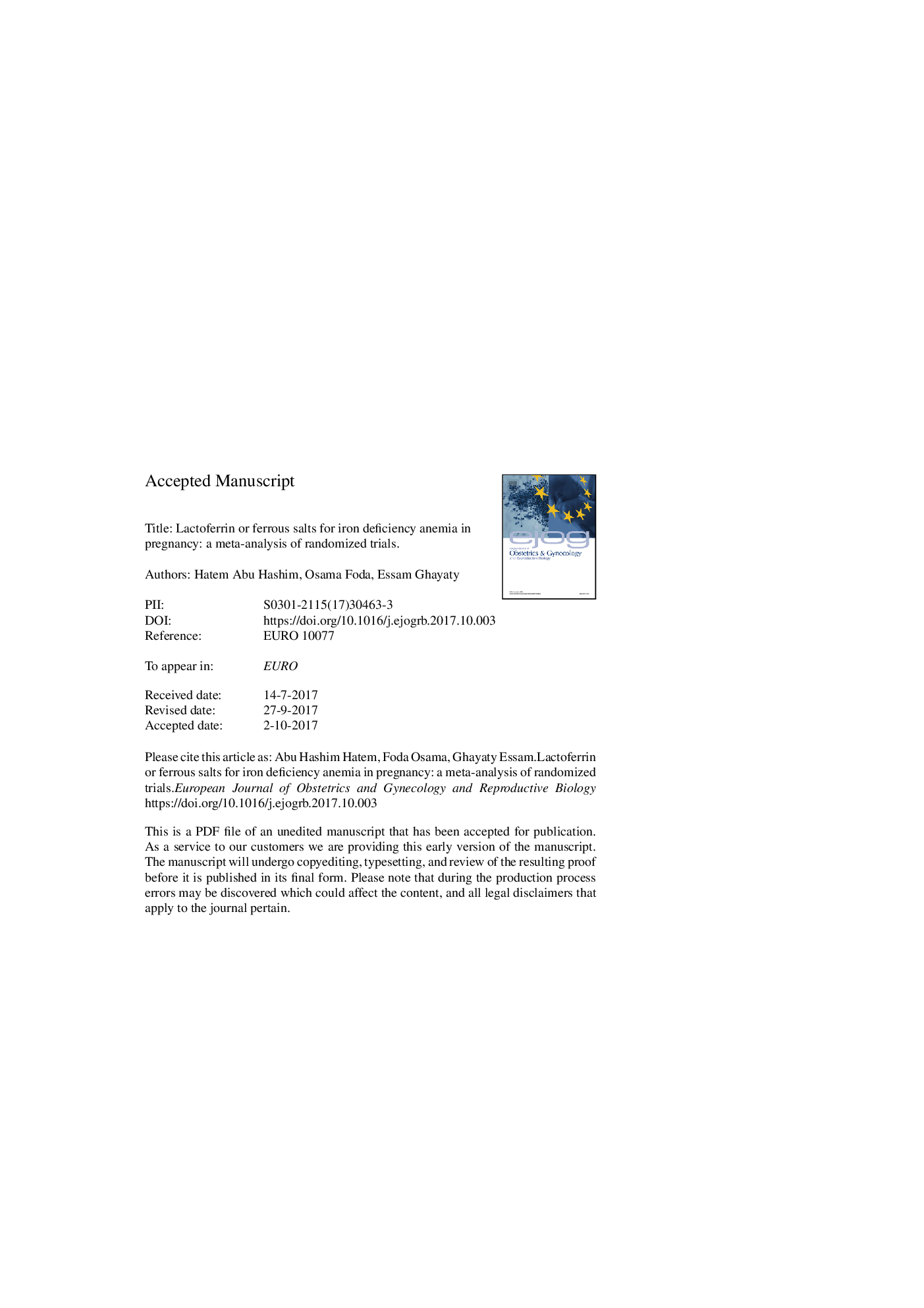| Article ID | Journal | Published Year | Pages | File Type |
|---|---|---|---|---|
| 8778235 | European Journal of Obstetrics & Gynecology and Reproductive Biology | 2017 | 24 Pages |
Abstract
Pooled estimates for change in hemoglobin levels at four weeks favored daily oral lactoferrin over daily oral ferrous sulphate (mean difference 0.77; 95% confidence interval [CI] 0.04-1.55; PÂ =Â 0.04, 4 trials, 600 women). However, after subgroup analysis (degree of anemia), no significant difference in hemoglobin levels were found between both groups in mild anemia (mean difference 0.80; 95% CI â0.21 to 1.82, 3 trials, 372 women), but a significant increase favoring lactoferrin was reported in moderate anemia (mean difference 0.68; 95% CI 0.53-0.83; PÂ <Â 0.00001, one trial, 228 women). Significantly less gastrointestinal side effects were reported with lactoferrin treatment. No significant differences existed with regard to other outcomes. In conclusion, for pregnant women with IDA, daily oral bovine lactoferrin is just as good as ferrous sulfate in improving hematological parameters with fewer gastrointestinal side effects. Thereby, lactoferrin should be the iron replacement agent of choice for treatment of IDA in pregnancy.
Related Topics
Health Sciences
Medicine and Dentistry
Obstetrics, Gynecology and Women's Health
Authors
Hatem Abu Hashim, Osama Foda, Essam Ghayaty,
